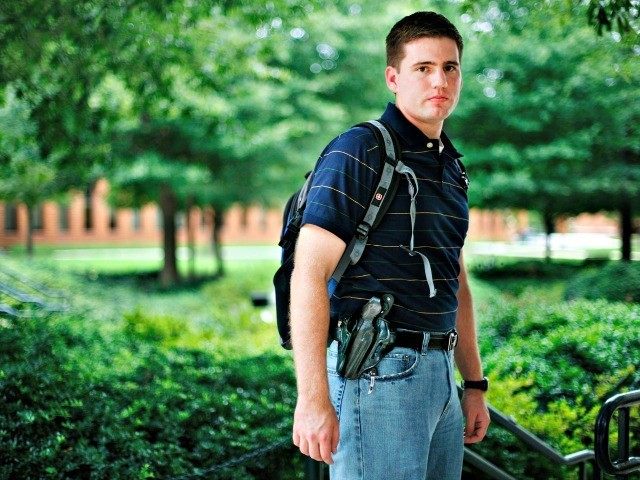On November 1, University of Wisconsin-Madison Police Chief Susan Riseling denounced Republican lawmakers’ efforts to expand campus carry in her state in the wake of the Umpqua Community College (UCC) shooting by suggesting armed law-abiding students won’t “prevent anything.”
In fact, Riseling suggested the continued expansion of concealed carry and the number of guns in America are leading to more problems, not less. She overlooked the fact that UCC was a gun-free zone, just like the Lafayette Grand Theatre (July 23), the Chattanooga military recruitment center (July 16), Florida State University (Nov. 2014), Fort Hood (April 2014), Arapahoe High School (Dec. 2013), LAX (Nov. 2013), the DC Navy Yard (Sept. 2013), Sandy Hook Elementary School (Dec. 2012), the Aurora movie theater (July 2012), Fort Hood (Nov. 2009), and Virginia Tech (April 2007), to name a few.
These examples and a plethora of others offer more incontrovertible proof that gun-free zones attract attackers who do not want to face resistance. Nonetheless, The Cap Times reports that in addition to asserting that law-abiding armed students will not “prevent anything,” Riseling said, “Where does this end? Do we then make sure that our school zones are not gun-free anymore? It just keeps going on and on. The proliferation of weapons in our society is actually leading to more problems, not fewer problems.”
Riseling cannot know what armed law-abiding students will or will not prevent. But allowing law-abiding students with concealed permits to carry for self-defense is not chiefly about prevention; it’s about changing outcomes.
How many of the outcomes in these shootings would have changed if some of the would-be victims had been armed to defend their own lives and the lives of their classmates, teachers, professors, and/or co-workers? In many cases, the gunmen would have lost the advantage of taking their time, reloading their guns, and taunting their victims.
Consider how the outcome of the November 2014 Florida State University shooting would have changed if the student with a concealed permit–who was also an Army combat vet–had been armed. He had a clear view of the gunman when the shooting began and could have taken him out, but Florida’s laws prevented the student from having his gun with him for self-defense.
Follow AWR Hawkins on Twitter: @AWRHawkins. Reach him directly at awrhawkins@breitbart.com.

COMMENTS
Please let us know if you're having issues with commenting.